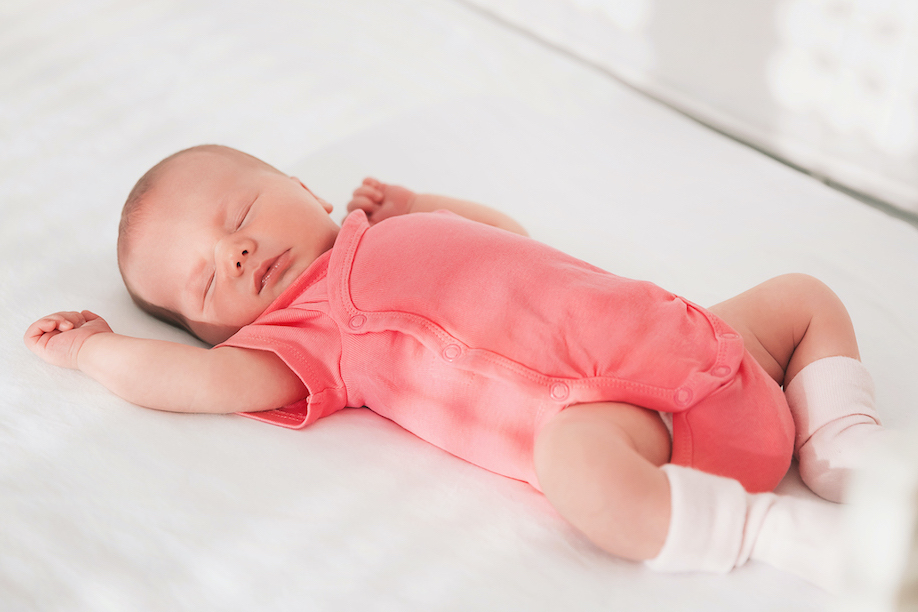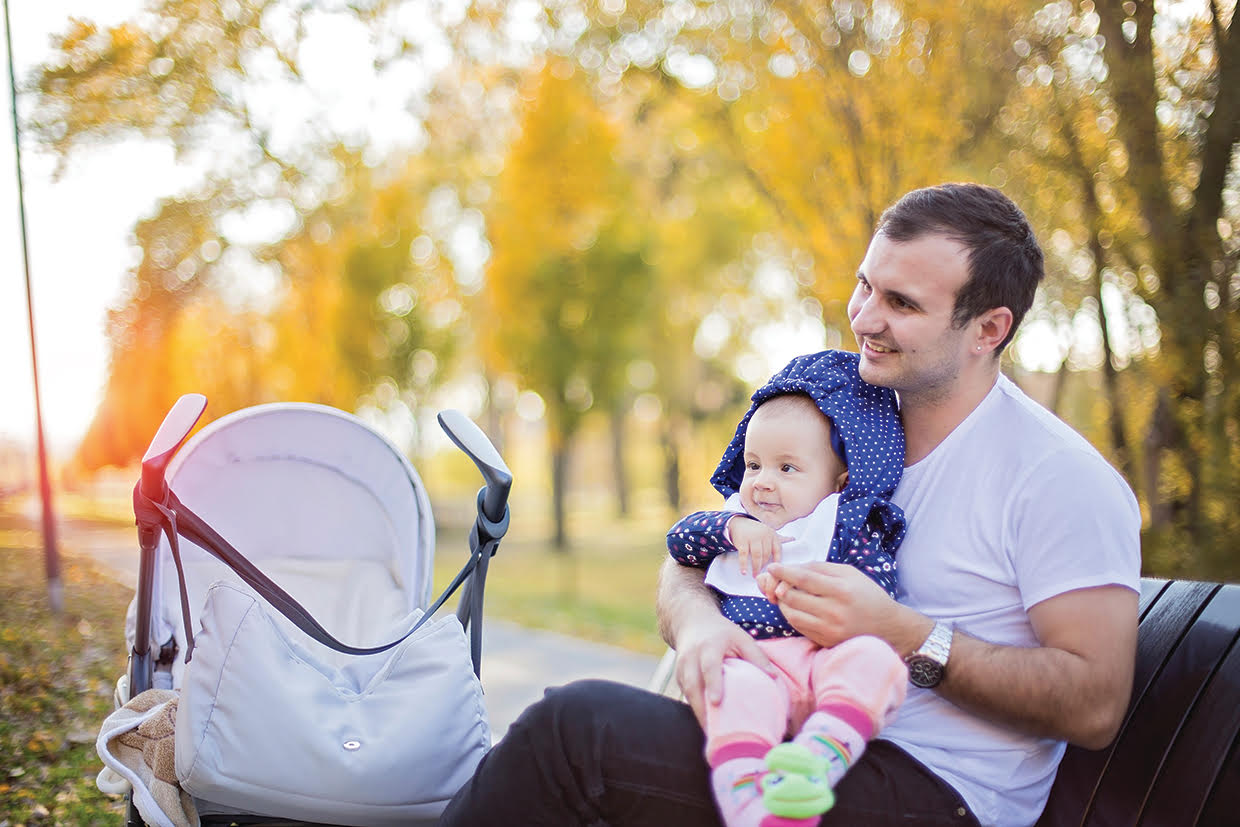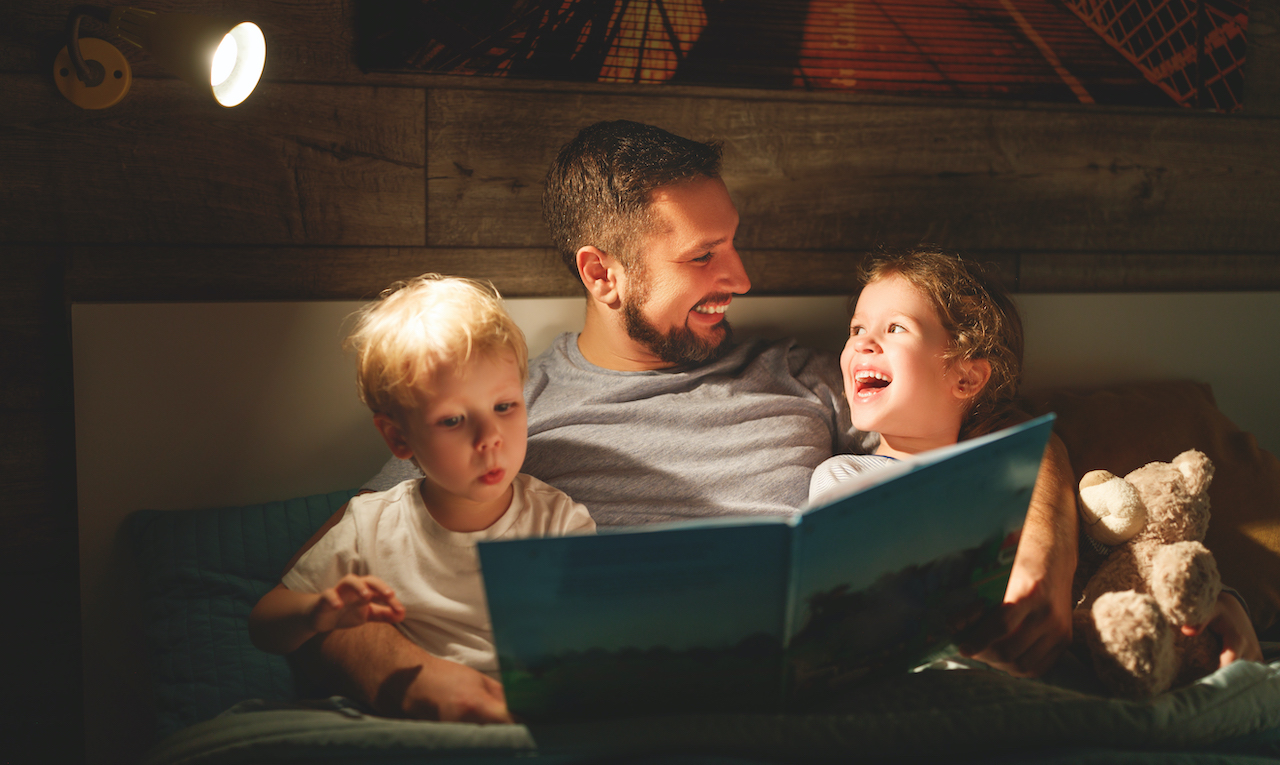
Ask DadPad, Parenting Advice
Ask DadPad: How do we cope with the clock change on Sunday?
Posted on 29th October 2021
Remember the good old days, before you had children, when the October clock change meant an extra, luxurious hour in bed on a Sunday morning? Well, if you’re a dad now, those days are probably (for now at least, until they’re teenagers) well behind you, and instead you’re probably worrying about how early you’re going to get woken up this Sunday. With research from In The Night Garden suggesting that one-third of parents reported that their child woke early after the clock change, you’re going to want to do all that you can to avoid facing 5.00am wake-ups for the next week or so!
However, the good news is that there are some great ideas out there from sleep experts on ways that you can at least minimise the impact that the clock change will have on your family and your little one’s sleep routine, if they have one.
[Don’t forget, though, that a newborn won’t be able to work with any of the body clock changes that we’ve suggested here. As you’re probably already aware, right now, it’s simply about coping with your baby’s waking and sleeping periods across the whole 24-hour period, as they gradually learn the difference between night and day. You can find out more about newborn sleep – and how to cope – in our blog post from last year.]
Adjusting your body clock
One of the best things that anyone – be they child or adult – can do in the run-up to a clock change is to take steps in advance to gradually adjust their going-to-sleep and waking-up times. For example, in preparation for the clocks going back an hour in October, sleep experts recommend that we start by going to bed 15 minutes later than normal, then a few days later move it forward another 15 minutes, and then repeat again, so that – by the time of the clock change – we are going to bed a full hour later than normal. This should mean that, when we wake on the Sunday morning at the ‘new time’ we’re much closer to our usual wake-up time, and have minimised the impact of the adjustment.
Obviously, with little people, doing this over a slightly longer period of time will make it easier for them, with Mandy Gurney from the Millpond Sleep Clinic suggesting that you start the shift some 10-12 days before the clock change, allowing them three nights at each new bedtime. Mandy comments:
Initially your child may wake at the same time in the morning, but by shifting their body clock slowly this way, you will find the morning will soon catch up. Remember to shift naps, meal and milk times as well.

Resetting your circadian rhythm
What we’re doing, in adjusting our body clocks, is actually resetting our circadian rhythm, which we talked about a little bit in our blog post all about baby’s sleep patterns from last year. We quoted from The Sleep Foundation, who explained that this is:
…basically a 24-hour internal clock that is running in the background of your brain and cycles between sleepiness and alertness at regular intervals. It’s also known as your sleep/wake cycle… A part of your hypothalamus (a portion of your brain) controls your circadian rhythm. That said, outside factors like lightness and darkness can also impact it. When it’s dark at night, your eyes send a signal to the hypothalamus that it’s time to feel tired. Your brain, in turn, sends a signal to your body to release melatonin, [a hormone] which makes your body tired. That’s why your circadian rhythm tends to coincide with the cycle of daytime and nighttime.
As noted by Jane Armstrong from Hunrosa Sleep Consultants, research has shown that it’s “prominently our exposure to light” that governs our circadian rhythm: “Bright sunlight in the morning to kick start it, dim light in the evening. This dimming light helps our bodies produce melatonin, the hormone that supports us to get to sleep.” So, working with light and dark is all going to help us – and our little ones – better adjust to the clock change.
Getting out in the light
This all means that one of the best things you can do to help both yourself and your child(ren) adjust their body clocks and sleep better at night is to get out and about during the day, exposing yourselves to natural light. Dr Rangan Chatterjee – in his book The Four Pillar Plan – advocates spending at least twenty minutes outside every morning. He says:
Our exposure to the sun in the morning is part of our evolutionary heritage. It’s critical for feelings of well-being in the day but also for good quality sleep at night… [And] it doesn’t matter if it’s cloudy. Even on the dullest days, we’re still exposing ourselves to light at a higher amount outdoors than if we were in… This light information goes to our central body clock… which, though the nervous system, orchestrates all of our body’s peripheral clocks and rhythms.
In addition to a morning walk with your toddler, you might also want to encourage them to play outside a little bit longer in the afternoons in the run-up to and in the week or so after the clock change, as this will also help them to stay awake and then sleep better when they are put to bed. Mandy Gurney explains that this helps because exposure to light inhibits the production of melatonin, the sleep hormone – and that’s also why we really shouldn’t be staring at our phone and tablet screens right before we try to get to sleep!

Embracing the darkness
Of course, the opposite to light, which keeps us awake, is darkness, which helps us to sleep. With the evenings now becoming darker, this shouldn’t be so much of an issue at bedtime but – for a few weeks after the clock change at least – the mornings will be a little bit brighter. It’s therefore definitely worth thinking about getting black-out curtains and/or blinds* for the room that your child or baby sleeps in, to help block out daylight as much as possible. Dr Chatterjee also recommends checking for and eliminating – as much as possible – any other possible sources of light that could leak into the bedroom, such as from the landing (are any windows there also covered at night? – are any lights left on?).
Depending on the age of your child, you might also want to use a clock in their room, to let them know when they are ‘allowed’ to wake up. There are lots of ‘sleep trainer’-type clocks available for children now, or you could consider Mandy Gurney’s suggestion of having a lamp** in your toddler’s room which is plugged into a timer switch. Setting this for your child’s ‘wake up’ time can also help them learn when to get up, and of course both the clock and the timer switch can be adjusted as part of your body clock adjustment of timings in the run up to the seasonal time change.
Winding down for bed
For all of us, one of the best ways of increasing our chances of a good night’s sleep is to have a relaxing bedtime routine, which helps us wind down for bed and lets our body know that it needs to get ready for sleep. For your toddler, this means things like a relaxing (not playful), warm (not too hot) bath, followed by story time in bed, with low lighting, and a kiss goodnight. If you’ve already got a good bedtime routine in place with your child, starting it a little earlier or later, to help shift their bedtime in readiness for the clock change, should work well, as your child’s body and brain will be well practiced in recognising and responding to the cues that it’s nearly time for sleep.
Jan Jenner from Hunrosa also recommends that – to aid sleep – bedrooms should be quiet, dark environments, clutter free and calm. Obviously, this isn’t always possible with children’s rooms, which often also double as playrooms and/or toy stores, but a quick sweep around and tidy up of as many toys and stimulating items as possible before bedtime will help to keep things out of sight and hopefully also out of mind.

Anything else?
Of course, one of the big things that all parents know is that nap times need to be watched and managed carefully – a tea-time ‘danger nap’ can mean bedtime gets set back for hours, ruining any plans that you might have had for a relaxing evening in front of the TV together! So naps – and meal-times – might also need to be considered in relation to any adjustment of sleep times, wake up times etc as you prepare for the clock change.
It’s also imperative to always remember the importance of safe sleep practice whenever you’re thinking of making any changes or adjustments to your child’s sleep routine. For example, if you’re fitting new window coverings in the room that your child sleeps in, make sure that any blackout curtains or blinds* that you fit don’t have any dangling cords or ties that your baby or child can reach (and also, if you’re going to use a ‘wake-up lamp’ on a timer**, check that any electric cords or flex are out of reach). You can find out more about this danger, and the steps you should take to minimise the risk, via the RoSPA website. For a more thorough ‘refresher’ of the core safe sleep advice, have a read of our ‘Every Sleep Counts’ blog post and/or visit the fantastic Lullaby Trust website – all of this advice is especially relevant if you’re getting less sleep around the time of the clock change, and therefore might find yourself dropping off on a chair or sofa during the day (always remember to ‘Lift the Baby‘ first) and/or more inclined to bring your baby or toddler into bed with you so that you can snatch a few more hours or minutes sleep. Above all, remember that:
The safest place for your baby to sleep is on their back in a cot or Moses basket in the same room as its parents/carers for the first six months.
And, if all else fails – well, at least CBeebies is on from 6.00am on Sunday…
For a summary of some of the core advice on helping your child adjust to the clock change, have a look at this short video from Mandy Gurney:
References and further reading:
Chatterjee, Dr Rangan (2018) The Four Pillar Plan. [Available from Amazon]
Every Sleep Counts webpage:
Hunrosa Sleep Consultants articles:
- Eight tips to regain your sleep routine, via HeadStart Kernow
- “When the clocks go back: make the most of the extra hour” by Carol Burns, in Cornwall Life magazine
In The Night Garden website:
Lift the Baby website
The Lullaby Trust website:
Millpond Sleep Clinic Blog Posts:
NCT webpage:
RoSPA (Royal Society for the Prevention of Accidents) website:

